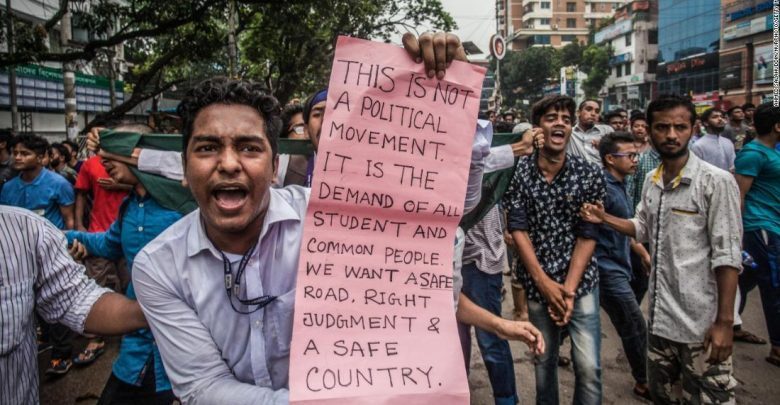Bangladesh, a former economic basket case renowned for poverty and famine, has turned the tide. She has become one of the five fastest-growing economies in the world.
The South Asian country of 160 million people holds good economic lessons for Nigeria.
She has indirectly taught Nigeria how a poor, populous, diverse and backward country can navigate poverty,
Steady economic growth of Bangladesh
Bangladesh, from unemployment and poor infrastructure, moved to launch itself onto the path of growth and sustainable development.
The country gained independence from Pakistan in 1971 after a fratricidal war.
Within 48 years of Independence, it has grown by more than 5 percent consistently since 2005.
In 2018, Bangladesh recorded a GDP growth of 7.9 percent. In 209, the World Bank projects its GDP to grow by 7.3 percent.
Bangladesh growth was propelled by robust private consumption and the successes of its garment and pharmaceutical industries.
It’s the world’s second-largest apparel exporter behind China. Bangladesh ready-made garment industry is worth over $33 billion.
The country also has a highly developed and vibrant pharmaceutical industry providing about 97 percent of total medicinal requirements. It is also a leading drug exporter to the rest of the world.
From using carts as a means of transportation, Bangladesh now builds ships and depends less on foreign aid.
It’s also the largest jute producer in the world and is food sufficient.
Movement of Bangladesh from zero to hero
This was not always the case. In 1971, Bangladesh had the highest rural population density in the entire world.
And an annual population growth rate between 2.5 and 3 percent, chronic malnutrition for perhaps the majority of the people.
It also experienced the dislocation of 8 million and 10 million people who fled to India and returned to independent.
The new nation had few experienced entrepreneurs, managers, administrators, engineers, or technicians.
There were critical shortages of essential food grains and other staples because of wartime disruptions.
Bangladesh external markets for jute had lost because of the instability of supply and the increasing popularity of synthetic substitutes.
Three out of four Bangladesh were poor
Three out of four Bangladeshis lived in poverty and low economic growth throughout the 1980s. This suggested that a large number of households would remain trapped in chronic poverty.
Foreign exchange resources were minuscule, and the banking and monetary system was unreliable.
Although Bangladesh had a large workforce, the vast reserves of undertrained and underpaid workers were largely illiterate. Bangladesh citizens were also unskilled and underemployed.
Commercially exploitable industrial resources, except for natural gas, were lacking. Inflation, especially for essential consumer goods, ran between 300 and 400 percent.
But from the late 1990s the country began to reposition itself, educating and empowering its women in school enrolment.
It promoted aggressive economic as well as financial inclusion for all its citizens especially the rural poor.
It reformed its agriculture, garment and pharmaceutical industries to flourish.
According to the IMF, “Bangladesh has succeeded in fostering a dynamic and fast-growing economy with significant poverty reduction.”
Struggle for growth not over for Bangladesh
However, challenges remain. Bangladesh still has weak private sector investments, and relatively low foreign direct investment (FDI).
Its FDI is less than 1 percent of GDP) –, a high non-performing loan ratio in the banking sector. It indicates that it’s FDI has a risk to financial stability multiple taxes and lack of regulatory predictability.
Bangladesh reforms are being made to encourage private sector investment and FDI inflows. The country is also planning on issuance of National Savings Certificates, which is expected to deepen the capital market.
Certainly, Nigeria, was in a far better position than Bangladesh at independence. But it’s now the poverty capital of the world with severe infrastructure deficit and a mono-product economy. Nigeria however has a lot to learn from the success of Bangladesh. Bangladesh has grown consistently for the past 14 years and counting.


